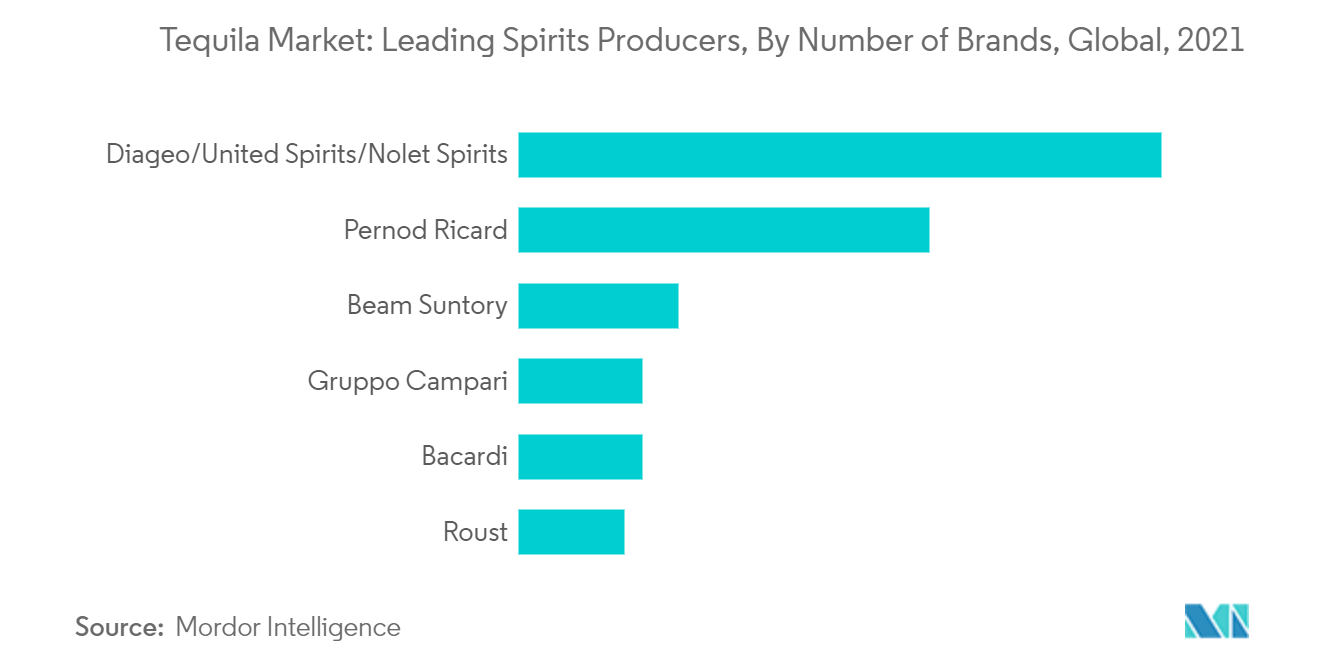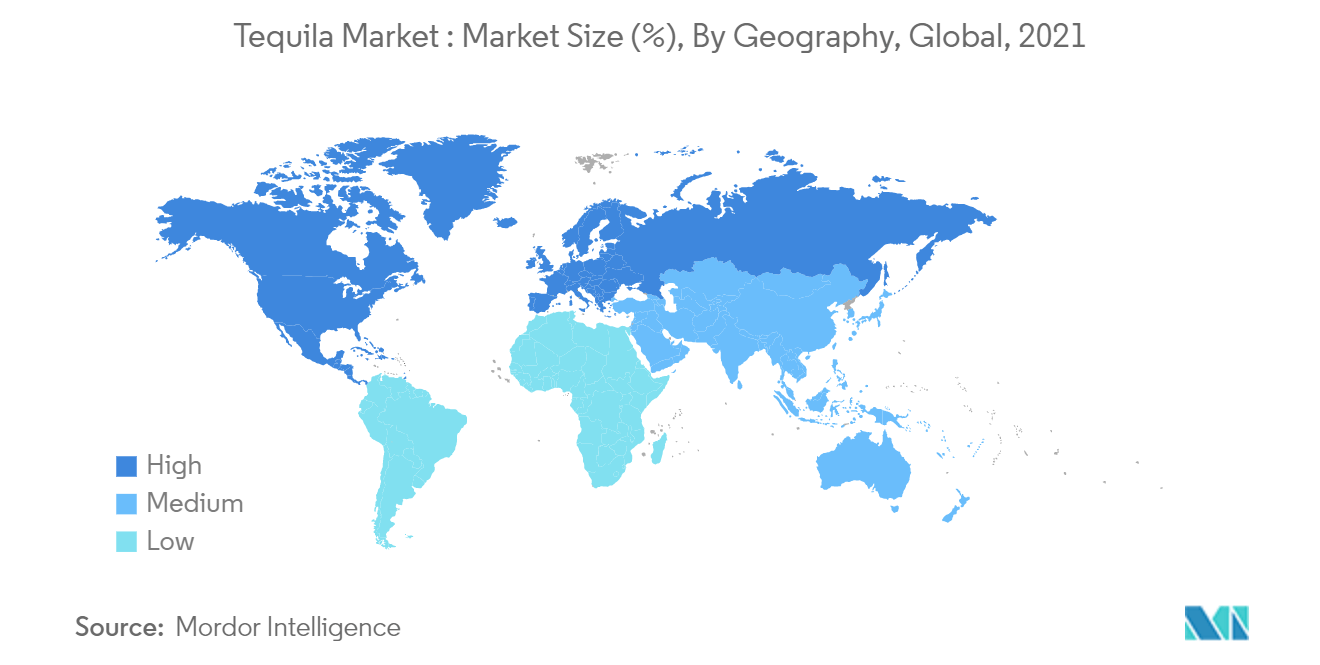Market Trends of Tequila Industry
Rising Demand For Premium Spirit
Owing to the higher incomes, the popularity of high-end drinks among the millennial population is growing and it has been fueling the demand for tequila. The sales of cocktails, such as margaritas, martinis, and manhattans, have gained remarkable traction in the developed economies of North America and Europe. Furthermore, the growing popularity of the cocktail culture in developing nations, such as China and India, is expected to promote the off-trade sales of premium spirits. The growing trend of partying at home is supported by the rising number of corporate workers and an increasing number of women consumers, who are willing to spend on premium spirits to enjoy leisure time. For instance, the recent consumer survey conducted by ICRIER (Indian Council for Research on International Economic Relations) shows that 26% of respondents are expected to move to premium brands of alcoholic beverages by 2030. Further, the trade associations and industry authorities are promoting awareness about high-end alcoholic beverages among Indian consumers, pushing the trend of premiumization. For instance, in September 2021, the Delhi-based office of USDA's Foreign Agricultural Service initiated a campaign to showcase the wide range of premium U.S. alcoholic products to key importers, hotel and restaurant sector (HRI) stakeholders, bartenders, and social media influencers.

North America Holds The Largest Share
Tequila has established itself as a popular spirit in the United States in recent times. Margaritas have helped grow Tequila's popularity in the United States, but consumers are now branching out to explore new consumption occasions including super-premium sipping Tequilas. Geographically the United States is in proximity to Mexico where tequila is more than a drink. Tequila is very special to Mexico. It is so special that there is a Tequila Regulatory Council (the Consejo Regulador del Tequila, also known as the CRT) that monitors the quality of the soil and water at each tequila distillery and also measures the quantity of blue agave that is used in the making of the tequila. For instance, according to Consejo Regulador del Tequila, in 2021, Mexico produced 527 million liters of tequila, the highest volume recorded since 1995. Within two and a half decades, production of this alcoholic beverage increased by approximately 405 percent, with a difference of 153 million liters between 2020 and 2021. Additionally, the high percentage of Hispanic consumers particularly in states such as Texas and California has helped tequila seed itself successfully in the United States bar culture.
In 2021, According to the distilled spirits council of the United States, the sales of agave-based spirits increased 30.1% year on year to USD 5.2 billion. Tequila was the second fastest growing spirits category, trailing only premixed cocktails. Also, tequila is one of the fastest growing alcoholic beverages in the United States., with consumption increasing by 40% in the last five years according to the statistics released by the Wine & Spirits Wholesalers of America (WSWA). The spirit's popularity in the region has grown significantly in recent years, with the category evolving to meet different tastes and preferences.


